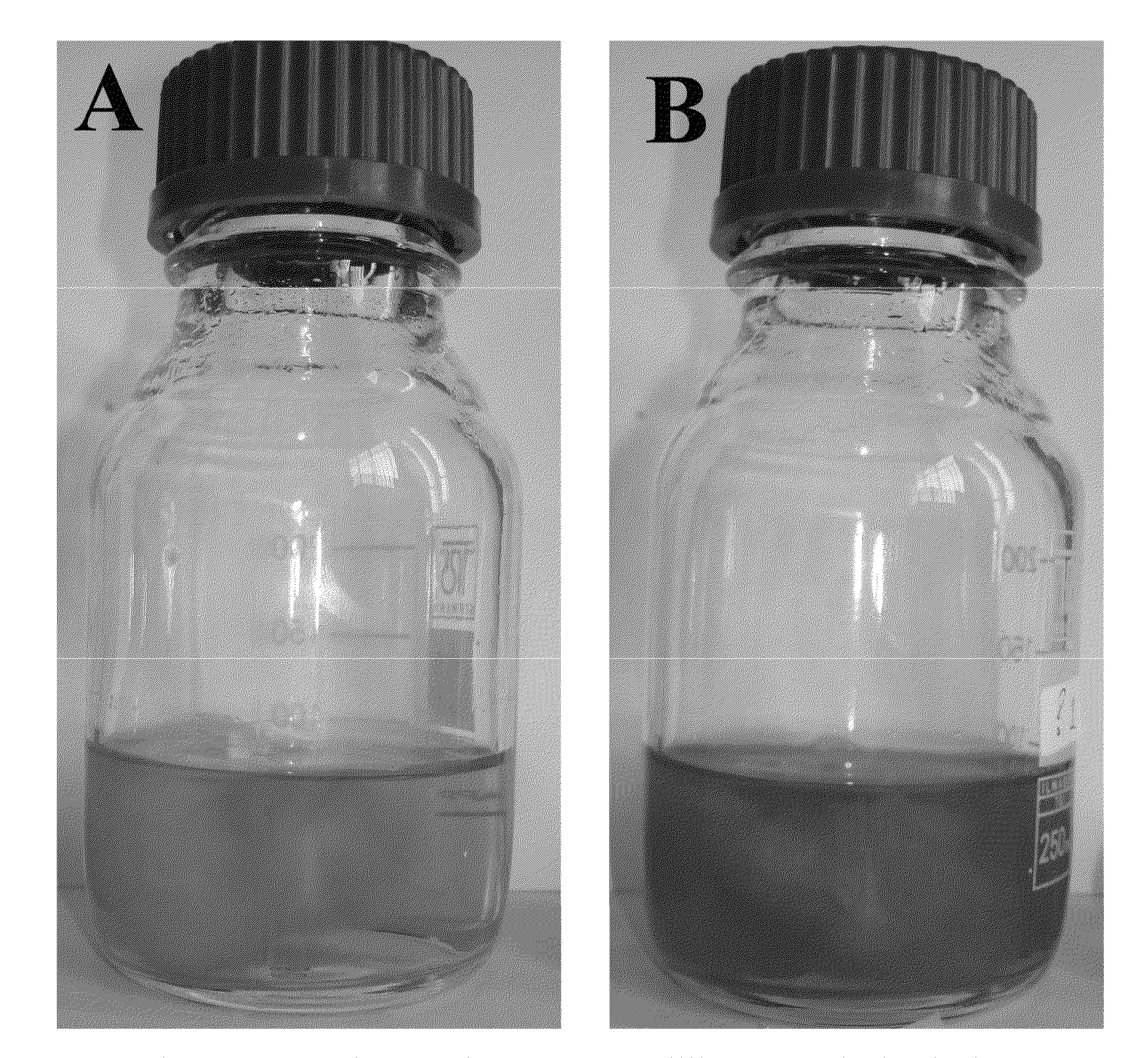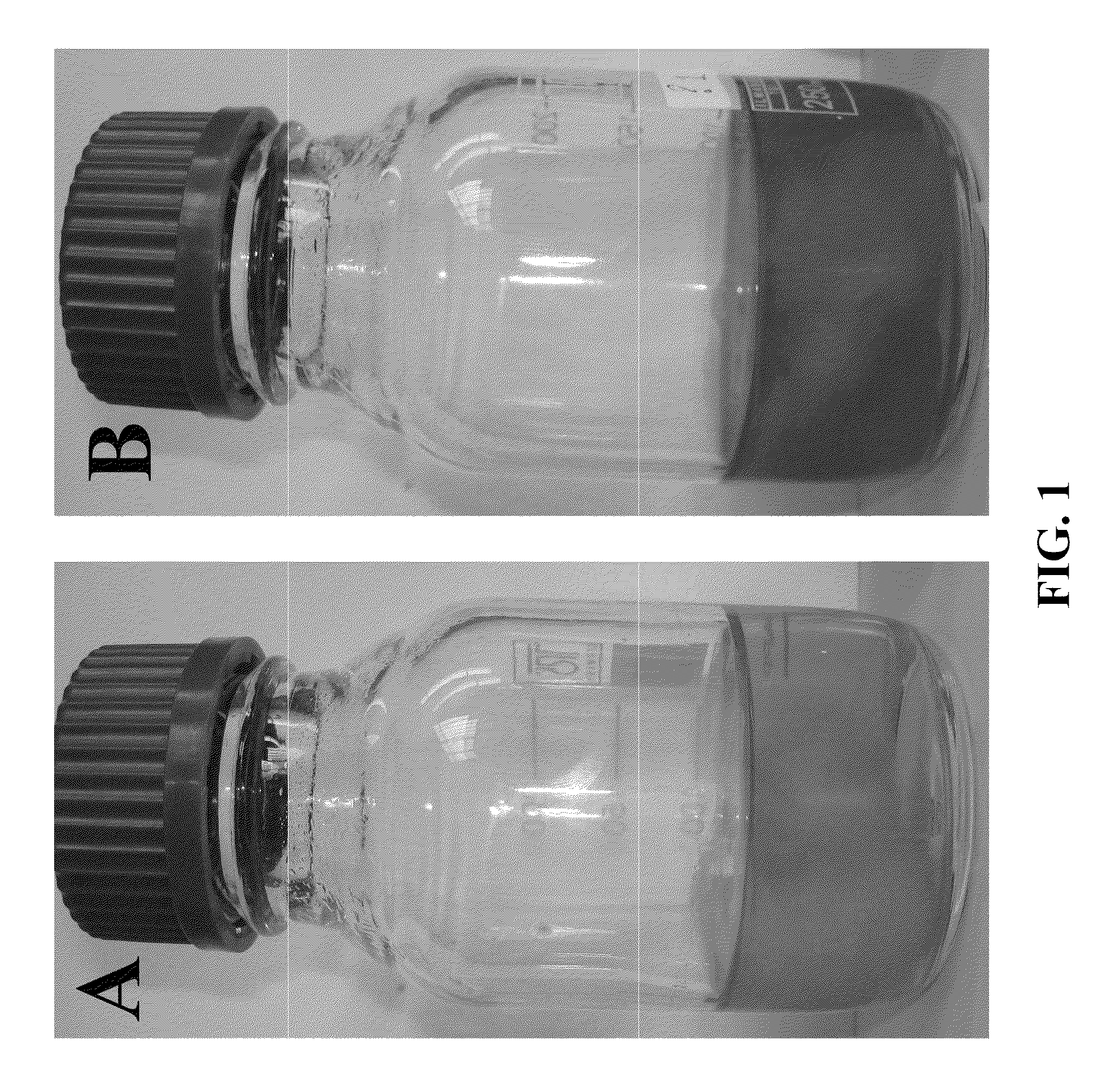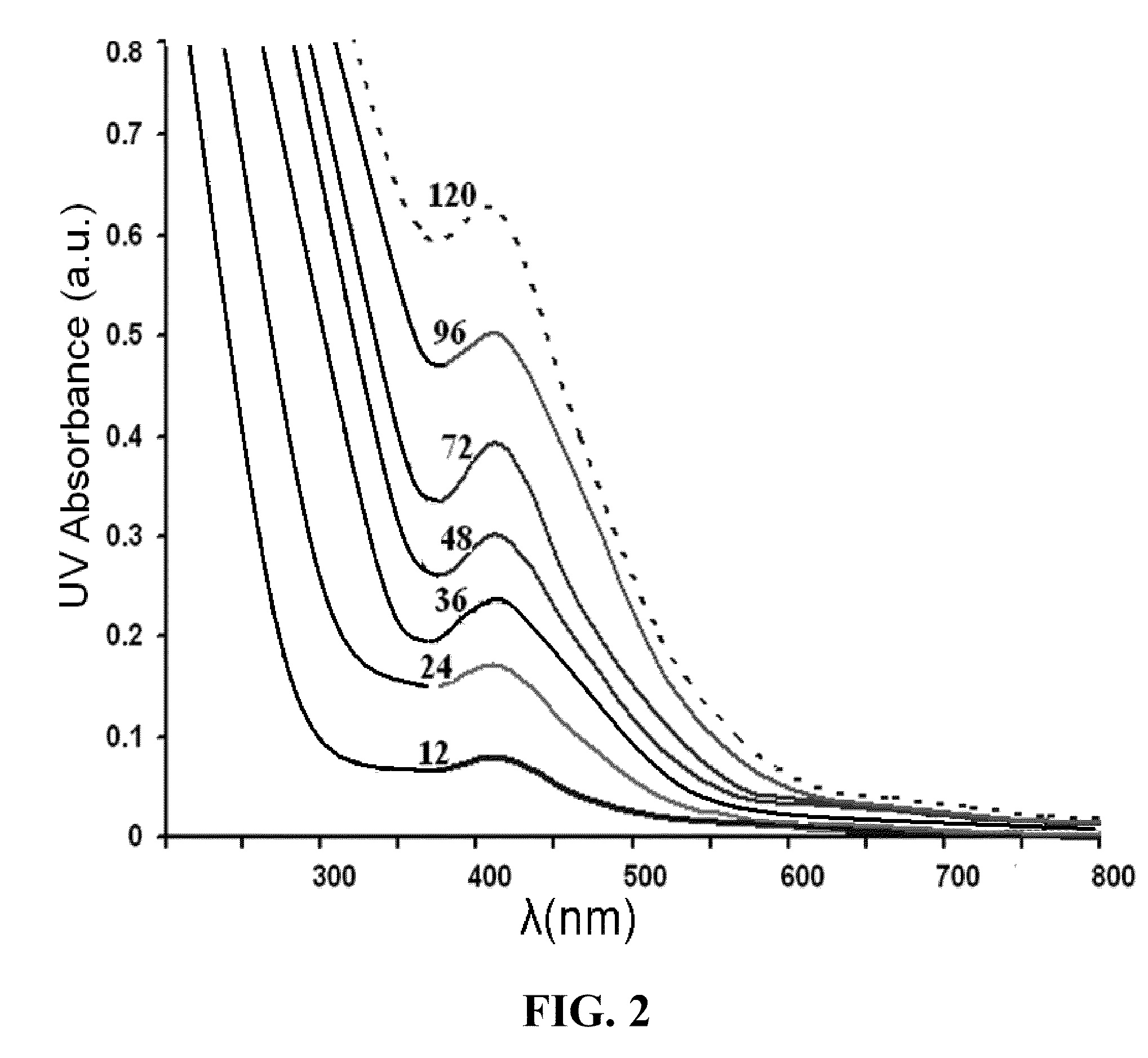Synthesis of nanoparticles by fungi
- Summary
- Abstract
- Description
- Claims
- Application Information
AI Technical Summary
Benefits of technology
Problems solved by technology
Method used
Image
Examples
example 1
Preparation of Fungus Trichoderma Reesei
[0044]In this example, various classical strains of Trichoderma reesei were used for experimentation. The fungal inoculates were prepared at 28° C. in Petri plates, in potato dextrose agar (PDA) media, which is a common microbiological media for culturing fungus. For the synthesis of nanoparticles, the fungus was grown in 200 mL bottles each containing 100 mL of a liquid medium comprising 0.5 wt. % glucose and 0.4 wt. % casein hydrolysate, in water. The bottles were stored at a temperature between 25-28° C., with continuous mixing by a magnetic stirrer (rotary shaker IKA KS 260 basic) at 150 rpm for 72 hours.
[0045]One reason the above described liquid medium was used for growth of the fungus is because the growth yield of Trichoderma reesei is generally greater in glucose-casein hydrolysate broth than in other media. Casein hydrolysate is a mixture of amino acids and peptides produced by enzymatic or acid hydrolysis of casein. The mycelial ma...
example 2
Biosynthesis of Silver Nanoparticles
[0046]In a typical biosynthesis production scheme of silver nanoparticles according to the present invention, 10 g of Trichoderma reesei wet biomass fungus was mixed with a 100 ml aqueous solution of 1 mM silver nitrate (AgNO3). Next, the mixture was placed in a 100 rpm rotating shaker at 28° C. for 120 hours. In this process, silver nanoparticles were produced through reduction of the silver ions to metallic silver by extracellular enzymes produced by the Trichoderma reesei fungal biomass.
example 3
Analysis of the Silver Nanoparticles
[0047]Optical spectroscopy has been widely used for the characterization of nanomaterials. In the examples described herein, three different spectroscopy techniques were used to fully characterize the silver nanoparticles produced. They include absorption UV-Visible light spectroscopy (see e.g., FIG. 2), fluorescence emission spectroscopy (see e.g., FIG. 3) and FTIR (see e.g., FIG. 4). UV-Visible light spectroscopy was used to follow up with the reaction process. The reduction of silver ions was routinely monitored by visual inspection of the solution as well as by measuring the UV-Visible spectra of the solution by periodic sampling of 2 mL aliquots of the aqueous component. The UV-Vis spectroscopic measurements were recorded on a Shimadzu dual-beam spectrophotometer (model UV-1601 PC) operated at a resolution of 1 nm. The fluorescence measurements were carried out on a Perkin-Elmer LS 50B luminescence spectrophotometer.
[0048]In order to perform ...
PUM
 Login to View More
Login to View More Abstract
Description
Claims
Application Information
 Login to View More
Login to View More - R&D Engineer
- R&D Manager
- IP Professional
- Industry Leading Data Capabilities
- Powerful AI technology
- Patent DNA Extraction
Browse by: Latest US Patents, China's latest patents, Technical Efficacy Thesaurus, Application Domain, Technology Topic, Popular Technical Reports.
© 2024 PatSnap. All rights reserved.Legal|Privacy policy|Modern Slavery Act Transparency Statement|Sitemap|About US| Contact US: help@patsnap.com










